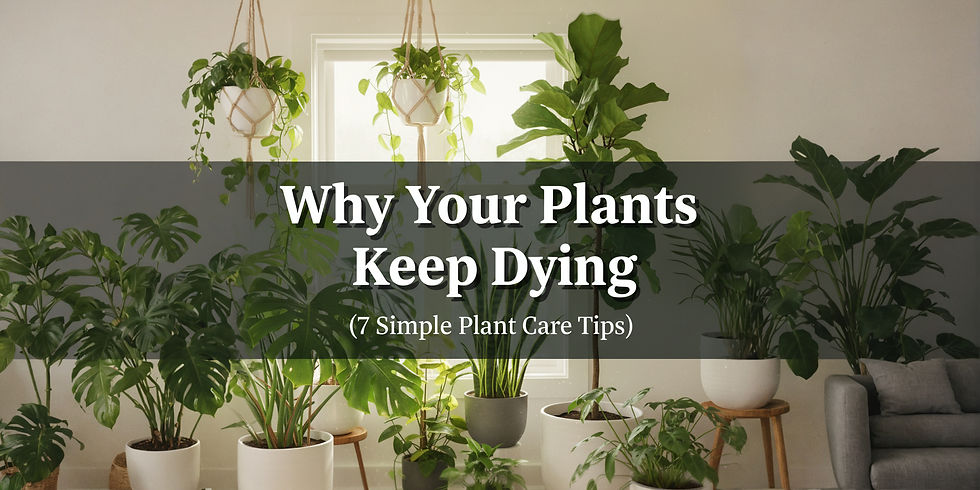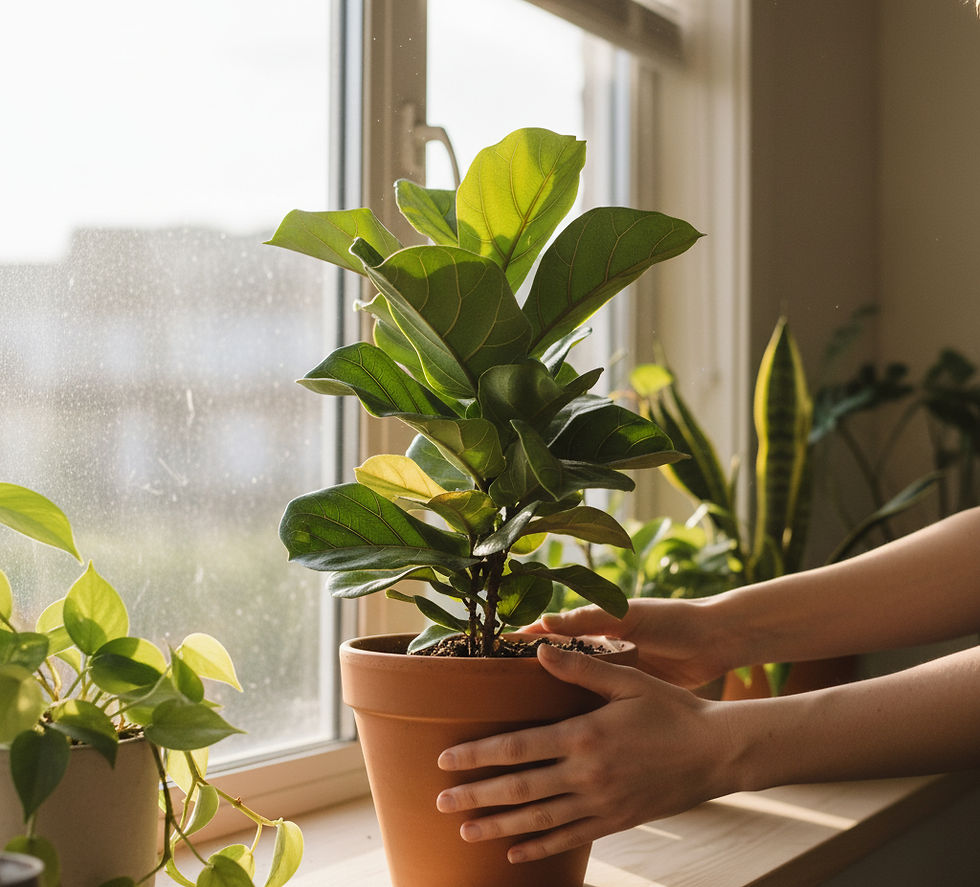Why Your Plants Keep Dying (7 Simple Plant Care Tips)
- Paramjeet Dhillon
- 5 days ago
- 3 min read

Indoor plants make our homes fresh, bright, and relaxing. But sometimes, no matter how much you water or feed them, they start drooping, yellowing, or even dying. Most plant problems are caused by simple mistakes that are easy to fix once you know what to look for.
Here are 7 practical plant care tips to help your plants grow healthy and strong.
1. Water Quality for Healthy Plants

It’s not just how often you water that matters—the quality of water is important too. Tap water can have chlorine, fluoride, or minerals that sensitive plants like ferns or orchids don’t like.
Tip: Use filtered or rainwater. For extra nutrients, you can mix a small amount of organic compost or vermicompost tea to support growth naturally.
2. Rotate Plants for Even Growth

Plants lean toward light, and if they stay in one spot, one side may grow weak or uneven.
Tip: Turn your plants slightly every week. This simple habit helps them grow fuller and stronger.
3. Clean Plant Leaves to Boost Growth

Dust blocks sunlight and slows down photosynthesis, weakening your plant.
Tip: Wipe leaves gently with a damp cloth once a week. For plants with small leaves, a soft brush or rinse under water works well. Clean leaves absorb sunlight better and look healthier.
4. Provide Airflow for Strong Stems

In nature, gentle wind strengthens stems and leaves. Stagnant indoor air can make plants weak and more prone to disease.
Tip: Keep a window open occasionally or use a small fan nearby for short periods. Even a little airflow helps plants develop stronger stems.
5. Use the Right Pot Size

Pot size affects root health. Too small a pot restricts roots, while a pot that’s too large holds excess water and can cause root rot.
Tip: Choose a pot slightly bigger than the root ball with drainage holes. Repot every 1–2 years to give roots room to grow. Mixing a small amount of Harit mantra vermicompost into the soil can give roots extra nutrients naturally.
6. Adjust Care by Seasons

Plants grow differently throughout the year. Many grow slower in winter and faster in spring or summer. Treating them the same all year can stress them.
Tip: Water and fertilize less in winter, and increase care during active growing months. Seasonal adjustments keep your plants healthy and happy.
7. Companion Plants for Better Growth

Some plants grow better when near “friendly neighbors.” Certain plants release helpful compounds or attract beneficial insects, while others may inhibit growth.
Tip: Plant herbs like basil or mint alongside other indoor plants. Companion planting can improve overall growth and make your indoor garden more resilient.
Quick Checklist for Healthy Plants
Use filtered or rainwater for sensitive plants.
Rotate plants weekly for even growth.
Clean leaves regularly.
Ensure gentle airflow.
Use the right pot size with drainage.
Adjust care according to the season.
Try companion plants for better growth.
Final Thoughts
Plants aren’t dying because you’re a bad gardener—they’re signaling what they need. By paying attention to water quality, airflow, leaf cleanliness, pot size, seasonal care, and plant neighbors, even struggling plants can bounce back and thrive.
Adding a natural, nutrient-rich option like vermicompost to your soil can support root growth and help your plants flourish, making your indoor garden greener and healthier without complicated routines.



Comments